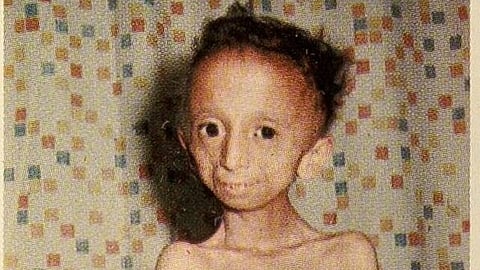Introduction
Progeria, also known as Hutchinson-Gilford Progeria Syndrome (HGPS), is an exceedingly rare genetic disorder characterized by accelerated aging in children. The term "Progeria" originates from the Greek word "geras," which means "old age." This condition was initially described in the late 1800s by Dr. Jonathan Hutchinson and Dr. Hastings Gilford, hence it is also referred to as Hutchinson-Gilford progeria syndrome. This condition is always fatal. In this article, we embark on a quest to unravel the mysteries of progeria by discussing its etiology, symptoms, diagnosis, complications, and management.
Epidemiology and Prevalence of Progeria
Progeria is exceptionally uncommon, It manifests in approximately 1 in every 4 million live births globally. Presently, around 400 children and young adults worldwide are living with HGPS.
Etiology of Progeria
De novo point mutation in the LMNA gene is the reason behind the condition. The LMNA is responsible for the synthesis of a protein termed lamin A. A small alteration in the LMNA gene prompts the production of an abnormal variant of the Lamin A protein known as Progerin. Progerin substitutes for Lamin A, destabilizing the nuclei of cells over time and gradually causing damage. Consequently, it leads to the death of every cell in the body, which causes the process of premature aging.
Symptoms of Progeria
Infants born with the condition typically exhibit normal health at birth; however, signs of premature aging typically manifest within the first one to two years of life, which include;
Short stature
Wrinkled skin
Alopecia
Nail dystrophy
Increased stiffness of joints limits the mobility of joints
Loss of fat from the body
Coxa vulga
Skin with a tough texture resembling scleroderma
Craniofacial abnormalities are:
Disproportionately small face compared to head
Abnormally prominent eyes
Narrow nasal bridge and tip
Micrognathia
Delayed eruption and loss of tooth
At later stages, symptoms that are less obvious begin to develop. Which includes
Diagnosis of Progeria
Physical examination: The physician will perform a physical examination and ask for symptoms.
CT and MRI scanning: scanning reveals generalized osteopenia, bone resorption around phalanges and distal clavicle, fish-mouth vertebral bodies, and wide metaphyses with narrow diaphysis. Craniofacial abnormalities like abnormal mandibular condyles, kinking of the optic nerve, and articular eminence hypoplasia. Soft tissue abnormalities also can be seen.
Histological examination: In the initial stages, the skin from sclerotic and firm regions exhibits characteristics of scleroderma, including epidermal acanthosis. Thickened collagen bundles are observable in the dermis, extending into the subcutaneous tissue. Mild perivascular infiltrate may be evident, accompanied by an elevated level of mucopolysaccharides acid.


